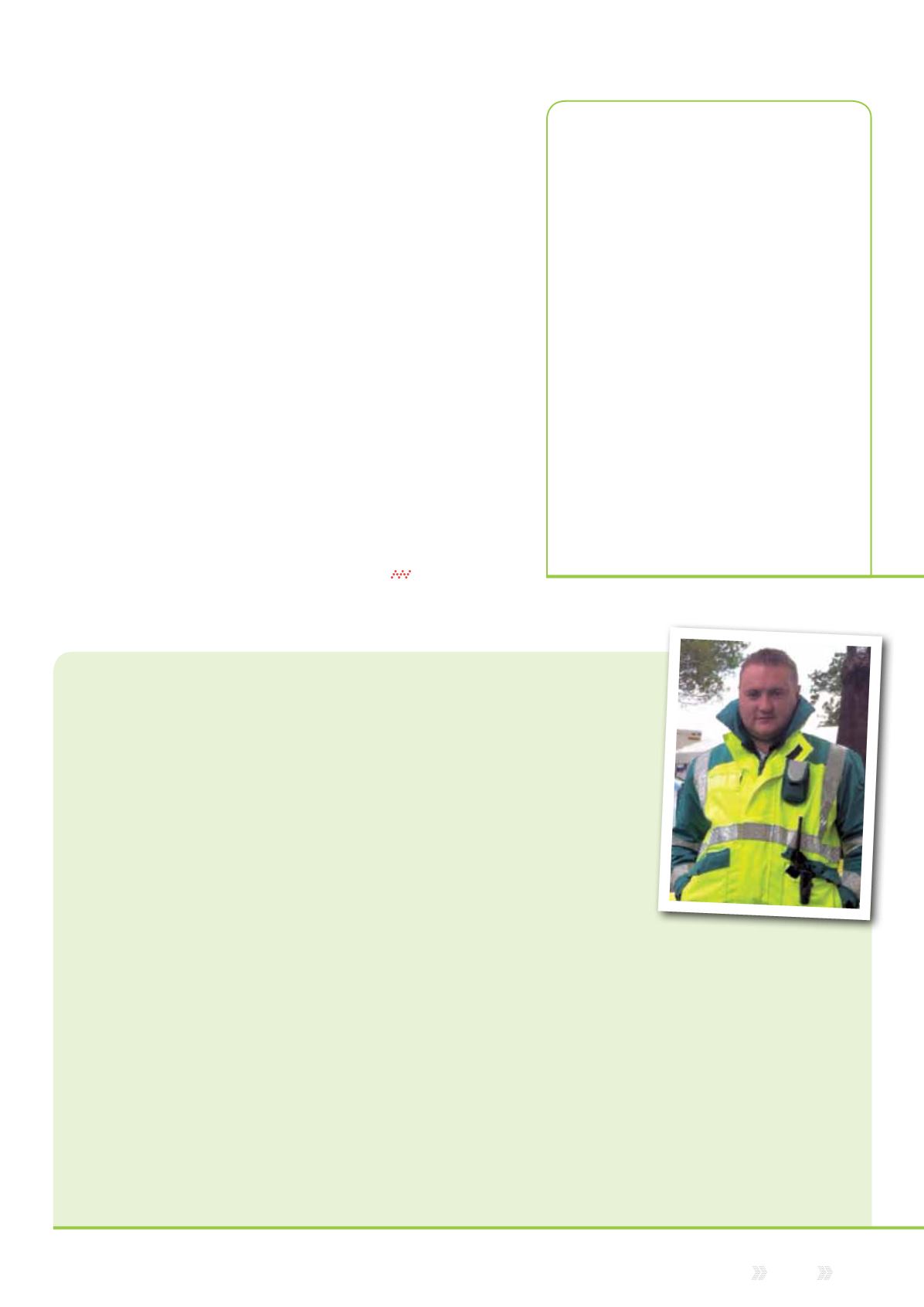
Reach
Issue 7 2014
|
17
John Teasdale has been a
Community First Responder
with NWAS for eight years.
He responds in the Northwich
area and provides around 15-20
hours a week voluntary cover for
NWAS, often arriving on scene
before the ambulance or rapid
response vehicle.
John told Reach how the new
Airwave service has benefited
his work. “The Airwave TM
has improved communication
significantly with Emergency
Operations Centre and it has
revolutionised the way in which
I respond. It has incorporated
us seamlessly into operations
and the efficiency of the device
is outstanding.
“As well as improving despatch
times to incidents it has also given
me much more reassurance for
personal safety. The addition of the
two-way messaging, tracking and
panic facility makes this an invaluable
tool. The ability to communicate
to control with vital updates such
as ‘patient deteriorated’ or ‘patient
cardiac arrest’ now frees me up on
scene to focus on delivering patient
care and reassurance.
“Take the example of a call I
received via the Airwave TM – which
was some two minutes ahead of
the analogue device. I immediately
responded to the Airwave message
with ‘can attend’ and given the
incident description. By the time I had
reached my car, Control had allocated
me and I was able to mobilise.
“En route I was unsure of the
location of the incident as it was given
solely as a local leisure complex,
so contacted Control by phone as I
approached. Control was immediately
able to identify my location using the
tracking system and guided me to
within 20 yards of the patient. This
undoubtedly saved me minutes of
Community
First Responders
walking around
the complex to
find the location.
“Upon arrival
I could confirm
that this was a
cardiac arrest
and as the
first arriving
resource was
able to control the resuscitation effort,
which continued until the arrival of the
ambulance. The crew arrived several
minutes later and I continued to work
with them throughout. Happily, with
the patient we had a ROSC (return of
spontaneous circulation) followed by
spontaneous breathing.
“The Airwave TM has been
invaluable. Had I not been deployed
via this device, I can guarantee that
I would have been delayed by four
to six minutes. It is efficient, robust
and by far worth the investment that
NWAS have made.”
Community First Responders are
volunteers who give their time freely
to help save lives in their community.
Responders are everyday members of
the general public who are trained in
the use of automated external
defibrillators and the treatment and
control of a wide range of potentially
life threatening conditions.
In cases of heart attack it has been identified
that early intervention can result in a
significant improvement in prognosis. First
Responders provide support to the regular
Ambulance Service by attending serious and
life threatening 999 calls in and around the
community to provide the earliest possible
intervention for patients in the first few
minutes until the arrival of an ambulance.
Focus on Community First Responder
John Teasdale
“If there are any issues, or if
they cannot find the incident,
or they feel they are in danger,
they can alert the control room
immediately either via status
messaging or using the dedicated
panic button. The control room
can send assistance either in terms
of information or sending police
or other support directly to the
volunteer. The control rooms will
also track the device, so if it drops
off the network or remains static in
one place, assistance will be sent.
We value our volunteers immensely,
and it is great that this new service
means we can support them more.
“Airwave has supported us
throughout the roll out, with
technical support, and helping
to address concerns. Initial user
audits show that some 75 per cent
of users say the Airwave TM is an
improvement over the old service.
We have had minimal issues with
the devices themselves, but we
have a 24-hour support centre
to support the volunteers – we
can remotely fix the device if
possible, or operate a 72-hour
replacement service.
“It is noticeable how many
emergencies the volunteers are
attending, and this can be partially
attributed to the new pager. It
increases the volunteers’ availability,
and the new technology has
created a good deal of interest and
motivation. Even if volunteers are
away from their own ‘home patch’,
if they have their pager and medical
kit with them, they can be available
anywhere within our region to assist.
“On average, the Airwave TM
alerts arrive 30 seconds quicker
than either the old paging service
or mobile phone texts, but the
difference can be up to three and
half minutes. Thirty seconds makes
a massive difference to response
time, and time is critical in medical
emergencies.”


